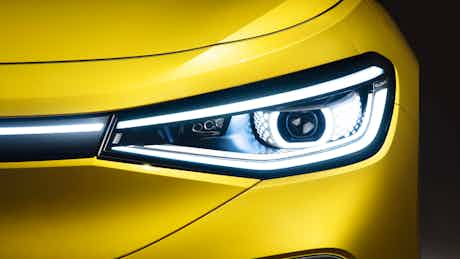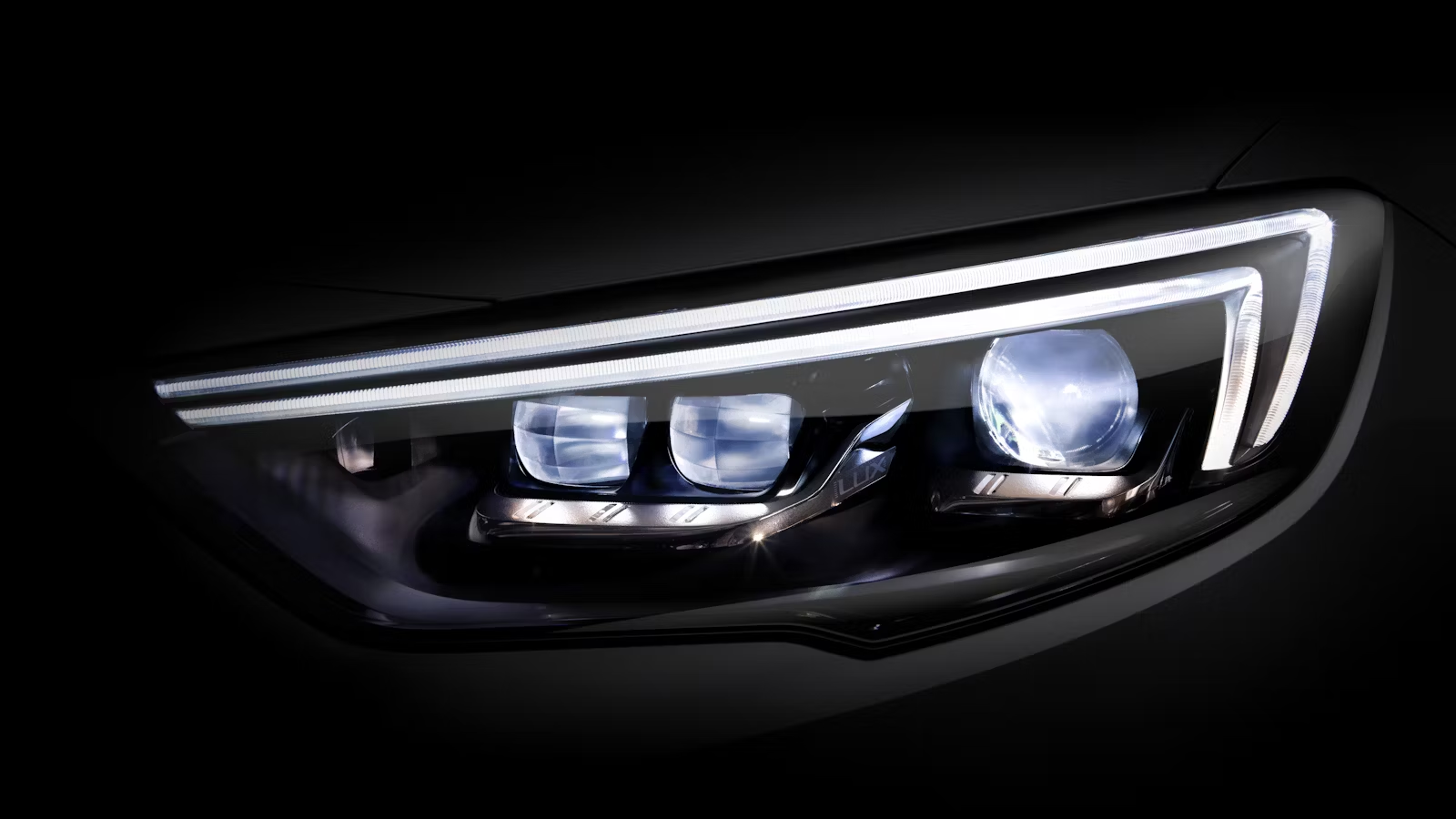What are adaptive headlights?
February 01, 2023 by carwow staff

Adaptive headlights were once the preserve of luxury cars, but are becoming increasingly common; we shine some light on the topic
Manufacturers have refined design and engineering over the years to the extent that the modern motor car has arguably reached a state of near perfection. Strong reliability, efficiency, safety and handling characteristics are all backed up by impressive engineering and design.
Where, car makers may well have asked themselves, do we go next? What can we do to ensure cars grow in their appeal?
The answer, in many cases, is to add new features that make things just that little bit easier, using technology to improve time spent behind the wheel.
Headlights are one area that has seen marked improvements over the last couple of decades, first moving from halogen to xenon technology, before LED headlights effectively became the industry standard.
Adaptive headlights are another refinement of vehicle lighting systems, but the term can apply to more than one technology. This guide will set out what these are, how they work, how much they cost, and if they’re worth it.
What are adaptive headlights?
The first type of adaptive headlights we’ll cover is the adaptive front lighting system (AFS). These can laterally pivot as the car takes a corner, so instead of always shining straight ahead, when the steering wheel is turned the headlights turn inside their housings, illuminating the course the car is taking rather than shining at the apex of the corner, for example.
This technology is nothing new: the 1967 version of the Citroen DS introduced directional headlights that worked precisely on this principle, although modern AFS is quicker to react, being electronically controlled, rather than being linked to the steering gear by cables, as was the case in the DS.
The term adaptive headlights can also refer to a technology that sees the left and right headlights operate independently of each other. The effect of this is that when an oncoming vehicle is detected, the lights can essentially ‘split’ automatically, shining around the other vehicle, while leaving the rest of the road illuminated.
What about adaptive matrix headlights?
Adaptive headlights can sometimes refer to matrix headlights, also known as pixel headlights.
These are seriously sophisticated pieces of technology, comprising multiple LEDs that can be switched on and off individually; the effect of this is that when traffic approaches, the headlights can illuminate all of the road on full beam, save for that area occupied by the oncoming vehicle: the LEDs that would be shining at other traffic immediately switch off as soon as it is detected by sensors on the car.
Matrix lights will also switch off sections of their beam to prevent your car from dazzling vehicles you approach from behind, and they can also turn off small areas of light that would otherwise shine onto large road signs, preventing glare being reflected back at you. When traffic is heavy matrix lights will switch off LEDs so that the effect is akin to having dipped headlights on.

Do adaptive headlights automatically dip?
Not necessarily: assuming we’re talking about adaptive lights that turn with the steering, auto-dip headlights, also known as high-beam assist, are a separate function – although are usually bundled together with adaptive lights.

Auto-dip lights use sensors to detect oncoming traffic or vehicles up ahead, and automatically turn the headlights on to dipped beam; once the other vehicle has passed, the headlights will revert back to full beam.
Auto-dip headlights are useful, and save you the hassle of having to dip the lights yourself, but some systems are quicker to react than others, while auto-dip lights won’t necessarily go to dipped beam for road signs and the like.
Adaptive headlights do away with the need for auto-dip, but lights that only turn with the steering will need to be dipped in the face of oncoming traffic if the car does not have an auto-dip function.
What about automatic headlights?
Just to throw another term into the mix, automatic headlights are different from all of the systems described above. Auto lights have a dusk sensor, which activates the headlights in low-light conditions. Auto lights are pretty simple, and are standard equipment on many cars, even relatively inexpensive ones.
How much do adaptive headlights cost?
Volkswagen charges (as of Feb 2023) £155 for auto-dip headlights on the entry-level Golf (higher-spec cars get it as standard.)
Adaptive matrix lights are much pricier, though, with BMW charging £1,000 for an adaptive lighting system that both turns the lights with the steering wheel, and splits the left and right headlight beams around other vehicles.
Matrix lights are also pretty pricey, with Volkswagen charging £1,375 for its IQ Lights on the Arteon. Matrix lights are standard on some luxury models, such as the Audi A8, though.
Are there any disadvantages to adaptive headlights?
Adaptive headlights – regardless of which specific technology you’re talking about – are really good pieces of kit, with matrix lights being particularly impressive.
But they don’t come cheap, obviously, and replacement costs can be high, which may be reflected in insurance premiums.
Adaptive lights also tend not to be repairable if something goes wrong, being sealed units that need replacement if they develop a fault, or are damaged by a loose stone, for example. Given the cost of these systems, a replacement outside of warranty could be painfully expensive (think £1,000 plus).
Cars Change? Carwow!
Looking for a new set of wheels? With Carwow you can sell your car quickly and for a fair price – as well as find great offers on your next one. Whether you’re looking to buy a car brand new, are after something used or you want to explore car leasing options, Carwow is your one stop shop for new car deals.














